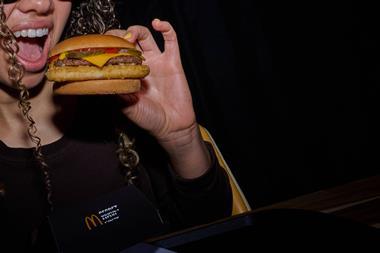salmon
Source: Alaskan Avoid: Wild Atlantic Status: Salmon is now extensively farmed as wild stocks have become severely depleted. Atlantic salmon stocks have been halved in the past 20 years and have disappeared from hundreds of traditional breeding rivers. However, most Alaskan salmon, which have a much shorter lifespan and are much more prolific breeders, have healthy stocks and are well managed
tuna
Source: Pacific skipjack or yellowfin (pole and line caught) Avoid: Mediterranean bluefin Status: In general, stocks are fully exploited with many overfished and worldwide catches doubling in the past decade. The most depleted is bluefin tuna, which has been all but wiped out by the sushi trade. There are also concerns over albacore in some areas and bigeye. Pole or line-caught tuna is 'dolphin friendly'
Prawns
Source: Norwegian, US, Canadian waters Avoid: Trawled tiger prawns. Status: The levels of cold water prawn stocks in the north east Atlantic are generally unknown, but populations are subject to large natural fluctuations . Scientists recommend sorting grids to reduce by-catch. India and Indonesia account for much of the landings of Tiger prawns, but there are concerns over levels of bycatch-endangered sea turtles
Coley
Source: North east Arctic, North Sea Avoid: Iceland and Faroes Status: Coley is often discarded by fisheries targeting cod but is targeted in some areas. The majority of stocks in fishing grounds such as north east Arctic, North Sea, Skagerrak, Kattegat, west of Scotland and Rockall are at sustainable levels. Faroes and Iceland stocks are currently healthy but are being fished at too high a level, so line-caught is better. Two Norwegian fisheries are ungergoing assessment by the MSC
Monkfish
Source: North east Atlantic (SW and north UK) Avoid: Spanish and Portuguese coasts Current status: Historically, many European stocks have been overfished but populations to the SW and north of the UK have recently recovered due to improved management. Southern European monkfish remain heavily depleted, however. American monkfish, also historically overfished, are also now recovering
Sea bass
Source: Greek farms or Cornwall (line caught) Avoid: Pair trawl-caught Status: Sea bass in UK shops are often from farmed sources in Greece, Turkey or France. Stocks in English waters are holding up well, while increasing water temperatures has allowed sea bass to expand northwards into the North Sea. Pelagic pair trawling was recently banned in UK waters due to dolphin bycatch, while juvenile sea bass are protected by a minimum landing size of 36cm
Haddock
Source: West of Scotland Avoid: N/A Status: Haddock is IUCN red-listed as vulnerable, but UK stocks have recovered significantly in the past five years. Stocks west of Scotland and in North Sea, Kattegat and Skagerrak are now at healthy or sustainable levels, but there is too much concentration on Icelandic and Faroese stocks. Most haddock is caught in mixed fisheries so has an impact on depleted stocks of cod and whiting
Plaice
Source: Irish Sea Avoid: North Sea, Bristol Channel Status: Large plaice are now very rare and there are concerns about overfishing in a number of areas around the British coast. However, Irish Sea stocks are at sustainable levels. A large number of undersized plaice are discarded in North Sea beam trawling
Langoustine
Source: North east Atlantic Avoid: Bay of Biscay and Iberian peninsula Status: The majority of langoustine eaten in Britain is caught off Scotland or in the north east Atlantic. While stocks are generally healthy, there are concerns in northern Europe over bycatch of cod, hake and whiting in langoustine fisheries. Pot or reel- caught methods improve sustainability. Southern European stocks of langoustine are close to collapse.
Cod
Source: Bering Sea and Aleutian Islands Avoid: UK waters Status: Pacific cod stocks are much healthier than Atlantic cod stocks, which are IUCN red-listed as vulnerable. All north-east Atlantic stocks are under pressure, but North Sea, Irish Sea, and the coasts of Greenland and Norway are among the worst affected areas. Langoustine fishing in the North Sea is also having an impact on cod numbers. Atlantic cod from Iceland and the Barents Sea (which may soon get MSC status) are better managed than those around the UK
Mackerel
Source: MSC-certified fisheries (line-caught in Cornwall, drift net caught in English Channel) Avoid: North Sea (trawled) Status: Stocks are generally considered overfished, although the handline fishery in Cornwall and the drift net fishery in the eastern English Channel, specifically between Beachy Head and Dungeness, are MSC-certified. North Sea stocks require maximum protection, with closures in place throughout the year in southern and central areas

















No comments yet